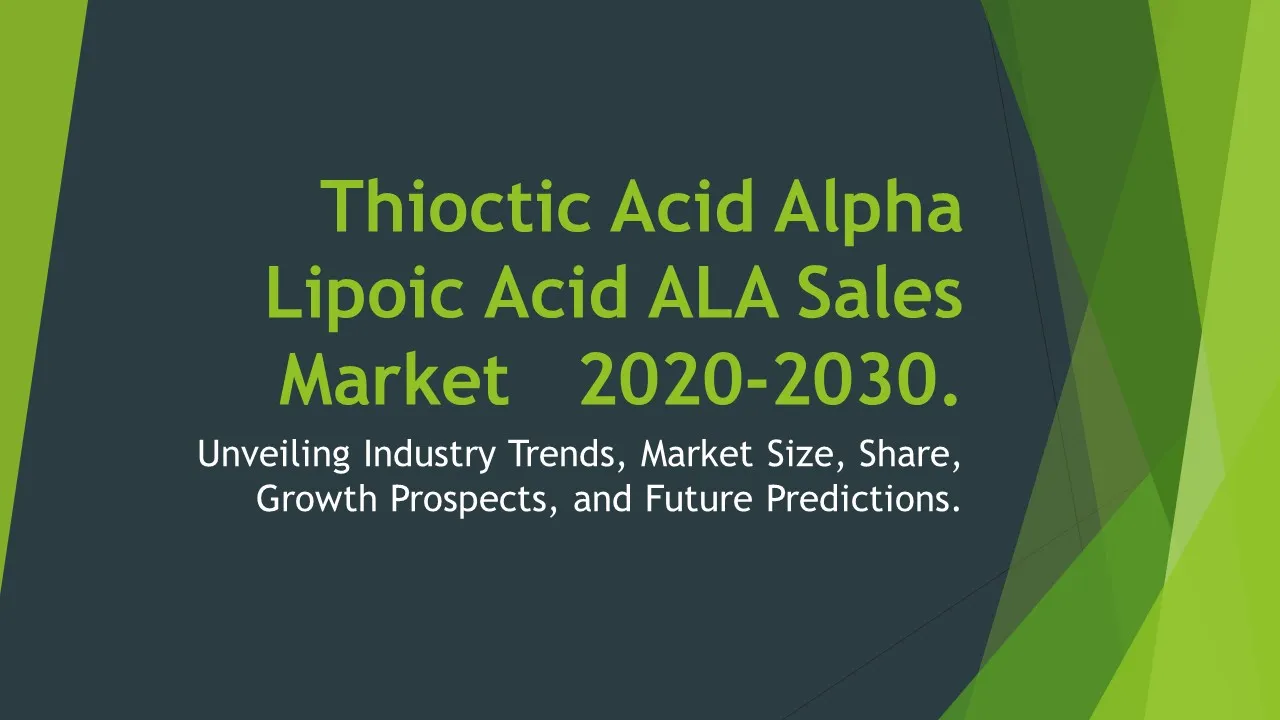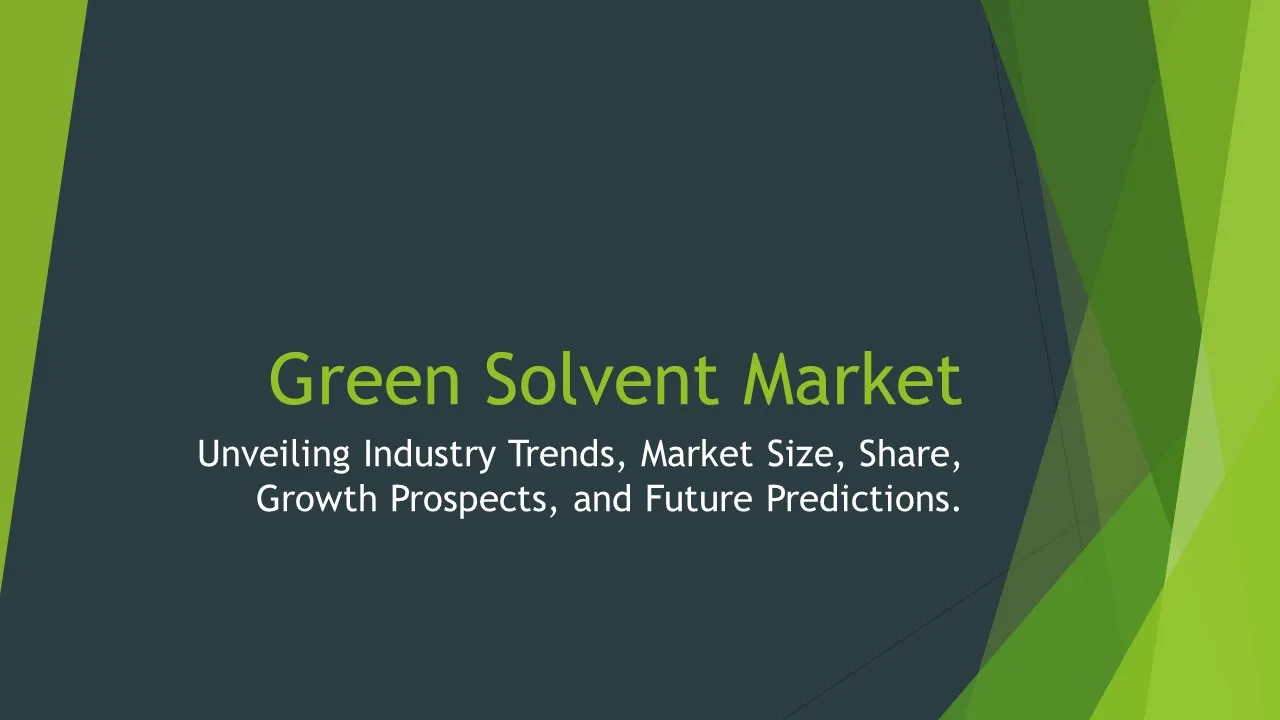Europium Oxide
Europium Oxide Market Segments - by Purity (99.9% Purity, 99.99% Purity, 99.999% Purity, 99.9999% Purity, Others), Application (Phosphors, Glass Additives, Catalysts, Ceramics, Others), End-Use Industry (Electronics, Healthcare, Energy, Automotive, Others), Distribution Channel (Direct Sales, Indirect Sales), and Region (North America, Europe, Asia Pacific, Latin America, Middle East & Africa) - Global Industry Analysis, Growth, Share, Size, Trends, and Forecast 2025-2035
- Report Preview
- Table Of Content
- Segments
- Methodology
Europium Oxide Market Outlook
As of 2023, the global Europium Oxide market is estimated to be valued at approximately USD 1.2 billion, with an expected compound annual growth rate (CAGR) of around 5.8% from 2025 to 2035. This growth is driven by increasing demand across various applications such as phosphors in display technologies, glass additives, and catalysts in chemical processes, which are expanding due to advancements in technology and the growing electronics industry. The rising adoption of LED lighting and the need for enhanced display performance in consumer electronics are significant factors compelling manufacturers to incorporate Europium Oxide in their production processes. Moreover, the expansion of the automotive sector, particularly in electric vehicles, is also anticipated to augment the market, as Europium Oxide plays a vital role in various components and materials. Additionally, the continuous research and development efforts aimed at discovering new applications for Europium Oxide contribute positively to the market's growth trajectory.
Growth Factor of the Market
The Europium Oxide market is witnessing robust growth driven by the surging demand for high-quality phosphors used in LED lighting and display technologies. The increasing preference for energy-efficient lighting solutions has led to the widespread adoption of Europium Oxide in various applications, enhancing the overall market landscape. Furthermore, the rise in consumer electronics, including smartphones, televisions, and tablets, has bolstered the requirement for advanced phosphor materials, significantly impacting the market's growth. The healthcare sector's ongoing advancements, where Europium Oxide is employed in imaging techniques and diagnostics, also contribute to the rising demand for this compound. Additionally, the automotive industry's shift towards electric and hybrid vehicles is opening new avenues for Europium Oxide applications in catalysts and other crucial components, further propelling the market forward.
Key Highlights of the Market
- Growing application in LED lighting and display technologies.
- Increased demand in the healthcare sector for imaging and diagnostic applications.
- Expansion in the automotive industry, particularly in electric vehicles.
- Technological advancements leading to new applications of Europium Oxide.
- Rising awareness regarding energy efficiency and sustainable materials.
By Purity
99.9% Purity:
Europium Oxide with 99.9% purity is commonly utilized in various industrial applications, including as a dopant in glass and ceramics. This level of purity is adequate for many standard applications where high-performance characteristics are not critically required. The segment is primarily driven by the growth of the glass and ceramics industries, where Europium Oxide imparts unique color properties and luminescent characteristics. As manufacturers continue to seek cost-effective solutions while meeting industry standards, the demand for 99.9% pure Europium Oxide remains consistent, particularly in applications where extreme precision is not paramount.
99.99% Purity:
The segment of Europium Oxide with 99.99% purity is increasingly favored in more demanding applications, especially in electronics and optoelectronics. This higher level of purity ensures enhanced performance characteristics, making it suitable for usage in high-quality phosphors and advanced glass compositions. The demand for 99.99% purity is growing, driven by the advancements in display technologies and consumer electronics, where superior color fidelity and brightness are essential. Manufacturers are investing in refining their processes to achieve this level of purity due to its vital role in enhancing product performance and extending the lifespan of electronic devices.
99.999% Purity:
Europium Oxide with 99.999% purity is essential for specialized applications where exceptional performance is critical, such as in high-end LED technologies and sophisticated medical imaging systems. This ultra-pure form of Europium Oxide is often utilized in research settings and high-technology industries, where precision is crucial for achieving desired outcomes. The stringent quality standards and the ability to provide superior luminescence properties have driven the demand for this purity level, particularly in sectors focused on innovation and technological advancements. The robust growth in the healthcare and aerospace industries is further solidifying the position of 99.999% purity in the market.
99.9999% Purity:
The highest grade of Europium Oxide, with a purity level of 99.9999%, is sought after for the most critical applications, including specialized research and development projects. This segment caters to ultra-precision industries, where even the slightest impurities can significantly impact performance and outcomes. The increasing complexity of modern technologies necessitates the use of such high-purity materials, particularly in sectors like quantum computing and advanced photonics. The demand for 99.9999% purity is expected to rise as more industries seek to incorporate cutting-edge technologies that require flawless performance and reliability in their materials.
Others:
Other types of Europium Oxide with varying purities are also available in the market, catering to niche applications and industries that may not require the highest purity levels. These grades, while less common, serve specific sectors where cost considerations and performance requirements are more balanced. The availability of these alternatives provides manufacturers and end-users with flexibility in sourcing materials that meet their specific needs without incurring excessive costs. The segment is likely to see steady demand as companies look for customized solutions for their unique applications.
By Application
Phosphors:
Europium Oxide's primary application lies in the production of phosphors, where it is used to generate red and green luminescence for various display technologies. The demand for high-quality phosphors is driven by the growing LED and LCD industries, where vibrant colors and energy efficiency are paramount. As the world shifts towards more energy-efficient lighting solutions, the role of Europium Oxide in phosphors becomes even more significant, ensuring that displays and lighting products meet consumer expectations for color quality and brightness. The increasing adoption of OLED technology in televisions and mobile devices is further amplifying the need for high-performance phosphors made using Europium Oxide.
Glass Additives:
In the glass industry, Europium Oxide is utilized as an additive to enhance the optical properties of glass products. Its incorporation improves color quality and provides unique luminescent characteristics, making it essential for decorative glassware and high-end glass products. The growing trend of using specialty glasses in architecture and interior design is driving demand for Europium Oxide as a glass additive. Manufacturers are increasingly focused on producing innovative glass products that cater to consumer preferences, further boosting the market for Europium Oxide in this application.
Catalysts:
Europium Oxide is recognized for its catalytic properties, particularly in chemical processes where it aids in enhancing reaction rates and improving product yields. The compound's application in catalysts is gaining traction, especially within the energy sector where it is used in the refining of petroleum and the synthesis of various chemicals. The shift towards sustainable practices and the production of cleaner fuels is propelling interest in Europium Oxide as a catalyst, offering a pathway for more efficient and environmentally friendly processes. As the demand for sustainable energy solutions continues to rise, the role of Europium Oxide in catalysis is expected to expand significantly.
Ceramics:
The ceramics industry also benefits from the unique properties of Europium Oxide, which enhances the strength and durability of ceramic materials. Its application in ceramics spans various sectors, including electronics, where it is used in the production of high-performance substrates and components. The increasing demand for advanced materials in electronics and telecommunications is driving the consumption of Europium Oxide in ceramics. As innovation drives the development of new ceramic applications, the Europium Oxide market is likely to see sustained growth in this segment, aligning with broader trends in material science and engineering.
Others:
Aside from the primary applications mentioned, Europium Oxide finds utility in various other fields such as coloring agents in laser materials and in certain specialized chemical reactions. Its versatility allows it to serve multiple niche applications that require specific properties. The segment of "Others" is expected to grow as industries continue to explore and develop new uses for Europium Oxide, further broadening its market potential. With ongoing research into new applications, this segment may capture a more significant share of the market as innovative technologies emerge, providing fresh opportunities for growth.
By Use Industry
Electronics:
The electronics industry is one of the largest consumers of Europium Oxide, primarily due to its application in phosphors for displays, LEDs, and other electronic devices. The growing demand for high-definition and energy-efficient displays has fueled the need for high-quality phosphors that can deliver vibrant colors and improved performance. Companies are increasingly focused on developing advanced electronic products, which in turn drives the demand for Europium Oxide. With the proliferation of smart devices and innovations in display technology, the electronics segment is projected to witness significant growth in the coming years, positioning Europium Oxide as a critical component in the industry.
Healthcare:
In the healthcare sector, Europium Oxide plays a role in imaging techniques, diagnostics, and medical imaging systems. Its luminescent properties are utilized in imaging agents that enhance the quality of diagnostic images. As the healthcare industry continues to evolve with advancements in technology, the demand for high-quality imaging solutions is steadily increasing. Europium Oxide's unique properties can contribute to better patient outcomes and improved diagnostics, thus driving its adoption in healthcare applications. The growing emphasis on precision medicine and advanced diagnostics is likely to enhance the market prospects for Europium Oxide in this domain.
Energy:
The energy sector employs Europium Oxide in various applications, particularly in catalysts for petroleum refining and in the production of renewable energy technologies. As the world increasingly focuses on sustainable energy solutions, the demand for materials that can enhance efficiency in energy processes is rising. Europium Oxide's role in catalysis is becoming more critical as industries seek to reduce emissions and improve the overall performance of their processes. With the global transition towards cleaner energy sources, the energy sector is expected to be a significant growth driver for Europium Oxide in the coming years.
Automotive:
Europium Oxide is finding applications within the automotive industry, particularly as a catalyst in exhaust systems and as a component in advanced materials used for manufacturing vehicles. The growing emphasis on emissions reduction and the adoption of electric vehicles are propelling the demand for high-performance materials that improve energy efficiency. As automotive manufacturers continue to innovate and strive for sustainability, Europium Oxide's properties will play an integral role in developing next-generation automotive technologies. The automotive industry is poised to become a significant contributor to the market growth of Europium Oxide as these trends continue to evolve.
Others:
Aside from the primary industries mentioned, Europium Oxide is also utilized in sectors such as telecommunications and aerospace. Each of these sectors may not consume Europium Oxide in large quantities, but the demand for specialized materials is growing as technological advancements continue to emerge. The versatility of Europium Oxide allows it to adapt to different applications, thus expanding its market reach. As industries continue to explore innovative solutions, the "Others" segment is expected to see a gradual increase in its share of the Europium Oxide market, driven by ongoing research and development efforts.
By Distribution Channel
Direct Sales:
Direct sales channels are a crucial aspect of the Europium Oxide market, where manufacturers and suppliers engage directly with end-users to provide their products. This channel allows for better communication regarding customer needs, ensuring that clients receive tailored solutions that meet their specific requirements. Through direct sales, manufacturers can also establish strong relationships with their customers, leading to repeat business and increased brand loyalty. As companies prioritize customer satisfaction and build lasting partnerships, the direct sales channel is expected to continue thriving, providing a stable revenue stream for Europium Oxide producers.
Indirect Sales:
Indirect sales channels involve intermediaries, such as distributors and wholesalers, who play a significant role in expanding the reach of Europium Oxide products to a broader audience. This distribution model enables manufacturers to access various markets without needing to establish a direct presence in each location. The indirect sales approach is particularly beneficial for small to medium-sized enterprises that may not have the resources to manage direct sales operations effectively. As the demand for Europium Oxide grows across different industries, leveraging indirect sales channels will be vital for manufacturers to optimize their market penetration and broaden their customer base.
By Region
The Europium Oxide market is anticipated to grow steadily across various regions, with Asia Pacific expected to hold the largest share due to its robust electronics manufacturing sector. In 2023, the Asia Pacific region accounted for approximately 40% of the global Europium Oxide market, primarily fueled by the increasing demand for consumer electronics, automotive applications, and healthcare technologies. Furthermore, the region's rapid industrialization and growing focus on energy-efficient solutions are driving demand for Europium Oxide. With a projected CAGR of 6.5% during the forecast period, Asia Pacific is set to maintain its dominance in the overall market landscape.
North America and Europe are also prominent players in the Europium Oxide market, holding substantial market shares due to their advanced technological capabilities and strong presence in the automotive and healthcare sectors. North America accounted for around 25% of the global market in 2023, driven by the emphasis on sustainable materials and the ongoing development of electric vehicles. Similarly, Europe is witnessing growth in demand for Europium Oxide, particularly in the electronics and healthcare industries, contributing approximately 20% to the global market share. As these regions continue to innovate and adopt advanced technologies, the demand for Europium Oxide is expected to grow steadily, aligning with broader industry trends.
Opportunities
The Europium Oxide market presents a myriad of opportunities for growth, particularly as industries increasingly seek to enhance the efficiency and performance of their products. One such opportunity lies in expanding the application of Europium Oxide in renewable energy technologies. As the world transitions towards sustainable energy sources, the need for materials that can improve energy storage and conversion processes will rise. Europium Oxide, with its unique properties, can play a pivotal role in the development of advanced materials for batteries and fuel cells, thus positioning itself as a key player in the renewable energy sector. Companies that invest in research and development to harness these opportunities can capitalize on the growing demand for greener technologies.
Additionally, the continuous advancements in display technology, particularly in the realms of OLED and MicroLED, provide substantial opportunities for Europium Oxide manufacturers. As consumers increasingly seek high-definition displays with superior color reproduction, the need for high-performance phosphors will continue to soar. Companies that focus on developing advanced phosphor solutions incorporating Europium Oxide can gain a competitive edge in the fast-evolving consumer electronics market. Furthermore, exploring new applications in niche markets such as quantum computing and photonics can also open new avenues for growth, allowing manufacturers to diversify their product offerings and enhance their market presence.
Threats
Despite the promising growth prospects, the Europium Oxide market faces several threats that could impact its development. One significant challenge is the fluctuating prices and supply chain disruptions of rare earth materials. As Europium is classified as a rare earth element, its availability can be affected by geopolitical factors and export restrictions from producing countries. This volatility in supply can lead to increased production costs for manufacturers, thereby impacting profitability and long-term sustainability. Additionally, competition from alternative materials and the potential for technological advancements to reduce the need for Europium Oxide in specific applications pose a threat to market growth, necessitating continuous innovation and adaptation by industry players.
Moreover, environmental concerns regarding the mining and processing of rare earth elements, including Europium, can lead to increased regulatory scrutiny and public opposition. As consumers and governments become more environmentally conscious, manufacturers may face pressure to adopt sustainable practices in their operations. Failure to comply with environmental regulations or address sustainability concerns could result in reputational damage and loss of market share. Therefore, companies operating in the Europium Oxide market must proactively address these threats by investing in sustainable practices and exploring recycling opportunities to mitigate risks associated with environmental impact.
Competitor Outlook
- China Minmetals Corporation
- Albemarle Corporation
- American Elements
- Solvay S.A.
- Molycorp, Inc.
- Stella Chemifa Corporation
- Shin-Etsu Chemical Co., Ltd.
- JFE Chemical Corporation
- Rare Earth Minerals Plc
- Lynas Corporation Limited
- Baotou Huachen Energy Technology Co., Ltd.
- China Northern Rare Earth Group High-Tech Co., Ltd.
- Vorbeck Materials Corp.
- Nanjing Jinling Rare Earth Co., Ltd.
- Tokyo Chemical Industry Co., Ltd.
The competitive landscape of the Europium Oxide market is characterized by a mix of large multinational corporations and smaller specialized companies, each vying for market share in different sectors. Leading companies like China Minmetals Corporation and Albemarle Corporation have established themselves as key players in the production and supply of rare earth materials, leveraging their extensive networks and production capabilities to meet the growing demand for Europium Oxide. These companies focus on technological advancements and process improvements to enhance product quality and reduce costs, ultimately providing a competitive edge in the market. Additionally, their global presence allows them to serve diverse customer bases across various regions and industries.
American Elements and Solvay S.A. are also significant competitors, known for their commitment to quality and innovation in rare earth materials. They are actively involved in research and development aimed at discovering new applications for Europium Oxide and other rare earth elements. Their emphasis on sustainable practices and compliance with environmental regulations gives them a strategic advantage as industries increasingly prioritize eco-friendly solutions. These companies are keen on investing in partnerships and collaborations to further expand their market reach and enhance their product offerings, which will be crucial for maintaining competitiveness in the evolving market landscape.
Additionally, companies like Lynas Corporation Limited and Shin-Etsu Chemical Co., Ltd. focus on the strategic sourcing and processing of rare earth materials, ensuring a stable supply chain to meet market demands. They are investing in advanced technologies for efficient extraction and processing methods, allowing them to produce high-quality Europium Oxide for various applications. By focusing on innovation and operational excellence, these companies aim to enhance their market position and capitalize on emerging opportunities in the industry. As the Europium Oxide market continues to evolve, these competitive dynamics will shape the overall landscape, influencing pricing, availability, and product offerings.
1 Appendix
- 1.1 List of Tables
- 1.2 List of Figures
2 Introduction
- 2.1 Market Definition
- 2.2 Scope of the Report
- 2.3 Study Assumptions
- 2.4 Base Currency & Forecast Periods
3 Market Dynamics
- 3.1 Market Growth Factors
- 3.2 Economic & Global Events
- 3.3 Innovation Trends
- 3.4 Supply Chain Analysis
4 Consumer Behavior
- 4.1 Market Trends
- 4.2 Pricing Analysis
- 4.3 Buyer Insights
5 Key Player Profiles
- 5.1 Solvay S.A.
- 5.1.1 Business Overview
- 5.1.2 Products & Services
- 5.1.3 Financials
- 5.1.4 Recent Developments
- 5.1.5 SWOT Analysis
- 5.2 Molycorp, Inc.
- 5.2.1 Business Overview
- 5.2.2 Products & Services
- 5.2.3 Financials
- 5.2.4 Recent Developments
- 5.2.5 SWOT Analysis
- 5.3 American Elements
- 5.3.1 Business Overview
- 5.3.2 Products & Services
- 5.3.3 Financials
- 5.3.4 Recent Developments
- 5.3.5 SWOT Analysis
- 5.4 Albemarle Corporation
- 5.4.1 Business Overview
- 5.4.2 Products & Services
- 5.4.3 Financials
- 5.4.4 Recent Developments
- 5.4.5 SWOT Analysis
- 5.5 Rare Earth Minerals Plc
- 5.5.1 Business Overview
- 5.5.2 Products & Services
- 5.5.3 Financials
- 5.5.4 Recent Developments
- 5.5.5 SWOT Analysis
- 5.6 Vorbeck Materials Corp.
- 5.6.1 Business Overview
- 5.6.2 Products & Services
- 5.6.3 Financials
- 5.6.4 Recent Developments
- 5.6.5 SWOT Analysis
- 5.7 JFE Chemical Corporation
- 5.7.1 Business Overview
- 5.7.2 Products & Services
- 5.7.3 Financials
- 5.7.4 Recent Developments
- 5.7.5 SWOT Analysis
- 5.8 Lynas Corporation Limited
- 5.8.1 Business Overview
- 5.8.2 Products & Services
- 5.8.3 Financials
- 5.8.4 Recent Developments
- 5.8.5 SWOT Analysis
- 5.9 Stella Chemifa Corporation
- 5.9.1 Business Overview
- 5.9.2 Products & Services
- 5.9.3 Financials
- 5.9.4 Recent Developments
- 5.9.5 SWOT Analysis
- 5.10 China Minmetals Corporation
- 5.10.1 Business Overview
- 5.10.2 Products & Services
- 5.10.3 Financials
- 5.10.4 Recent Developments
- 5.10.5 SWOT Analysis
- 5.11 Shin-Etsu Chemical Co., Ltd.
- 5.11.1 Business Overview
- 5.11.2 Products & Services
- 5.11.3 Financials
- 5.11.4 Recent Developments
- 5.11.5 SWOT Analysis
- 5.12 Tokyo Chemical Industry Co., Ltd.
- 5.12.1 Business Overview
- 5.12.2 Products & Services
- 5.12.3 Financials
- 5.12.4 Recent Developments
- 5.12.5 SWOT Analysis
- 5.13 Nanjing Jinling Rare Earth Co., Ltd.
- 5.13.1 Business Overview
- 5.13.2 Products & Services
- 5.13.3 Financials
- 5.13.4 Recent Developments
- 5.13.5 SWOT Analysis
- 5.14 Baotou Huachen Energy Technology Co., Ltd.
- 5.14.1 Business Overview
- 5.14.2 Products & Services
- 5.14.3 Financials
- 5.14.4 Recent Developments
- 5.14.5 SWOT Analysis
- 5.15 China Northern Rare Earth Group High-Tech Co., Ltd.
- 5.15.1 Business Overview
- 5.15.2 Products & Services
- 5.15.3 Financials
- 5.15.4 Recent Developments
- 5.15.5 SWOT Analysis
- 5.1 Solvay S.A.
6 Market Segmentation
- 6.1 Europium Oxide Market, By Purity
- 6.1.1 99.9% Purity
- 6.1.2 99.99% Purity
- 6.1.3 99.999% Purity
- 6.1.4 99.9999% Purity
- 6.1.5 Others
- 6.2 Europium Oxide Market, By Application
- 6.2.1 Phosphors
- 6.2.2 Glass Additives
- 6.2.3 Catalysts
- 6.2.4 Ceramics
- 6.2.5 Others
- 6.3 Europium Oxide Market, By Use Industry
- 6.3.1 Electronics
- 6.3.2 Healthcare
- 6.3.3 Energy
- 6.3.4 Automotive
- 6.3.5 Others
- 6.4 Europium Oxide Market, By Distribution Channel
- 6.4.1 Direct Sales
- 6.4.2 Indirect Sales
- 6.1 Europium Oxide Market, By Purity
7 Competitive Analysis
- 7.1 Key Player Comparison
- 7.2 Market Share Analysis
- 7.3 Investment Trends
- 7.4 SWOT Analysis
8 Research Methodology
- 8.1 Analysis Design
- 8.2 Research Phases
- 8.3 Study Timeline
9 Future Market Outlook
- 9.1 Growth Forecast
- 9.2 Market Evolution
10 Geographical Overview
- 10.1 Europe - Market Analysis
- 10.1.1 By Country
- 10.1.1.1 UK
- 10.1.1.2 France
- 10.1.1.3 Germany
- 10.1.1.4 Spain
- 10.1.1.5 Italy
- 10.1.1 By Country
- 10.2 Asia Pacific - Market Analysis
- 10.2.1 By Country
- 10.2.1.1 India
- 10.2.1.2 China
- 10.2.1.3 Japan
- 10.2.1.4 South Korea
- 10.2.1 By Country
- 10.3 Europium Oxide Market by Region
- 10.4 Latin America - Market Analysis
- 10.4.1 By Country
- 10.4.1.1 Brazil
- 10.4.1.2 Argentina
- 10.4.1.3 Mexico
- 10.4.1 By Country
- 10.5 North America - Market Analysis
- 10.5.1 By Country
- 10.5.1.1 USA
- 10.5.1.2 Canada
- 10.5.1 By Country
- 10.6 Middle East & Africa - Market Analysis
- 10.6.1 By Country
- 10.6.1.1 Middle East
- 10.6.1.2 Africa
- 10.6.1 By Country
- 10.1 Europe - Market Analysis
11 Global Economic Factors
- 11.1 Inflation Impact
- 11.2 Trade Policies
12 Technology & Innovation
- 12.1 Emerging Technologies
- 12.2 AI & Digital Trends
- 12.3 Patent Research
13 Investment & Market Growth
- 13.1 Funding Trends
- 13.2 Future Market Projections
14 Market Overview & Key Insights
- 14.1 Executive Summary
- 14.2 Key Trends
- 14.3 Market Challenges
- 14.4 Regulatory Landscape
Segments Analyzed in the Report
The global Europium Oxide market is categorized based on
By Purity
- 99.9% Purity
- 99.99% Purity
- 99.999% Purity
- 99.9999% Purity
- Others
By Application
- Phosphors
- Glass Additives
- Catalysts
- Ceramics
- Others
By Use Industry
- Electronics
- Healthcare
- Energy
- Automotive
- Others
By Distribution Channel
- Direct Sales
- Indirect Sales
By Region
- North America
- Europe
- Asia Pacific
- Latin America
- Middle East & Africa
Key Players
- China Minmetals Corporation
- Albemarle Corporation
- American Elements
- Solvay S.A.
- Molycorp, Inc.
- Stella Chemifa Corporation
- Shin-Etsu Chemical Co., Ltd.
- JFE Chemical Corporation
- Rare Earth Minerals Plc
- Lynas Corporation Limited
- Baotou Huachen Energy Technology Co., Ltd.
- China Northern Rare Earth Group High-Tech Co., Ltd.
- Vorbeck Materials Corp.
- Nanjing Jinling Rare Earth Co., Ltd.
- Tokyo Chemical Industry Co., Ltd.
- Publish Date : Jan 20 ,2025
- Report ID : CH-17353
- No. Of Pages : 100
- Format : |
- Ratings : 4.5 (110 Reviews)









